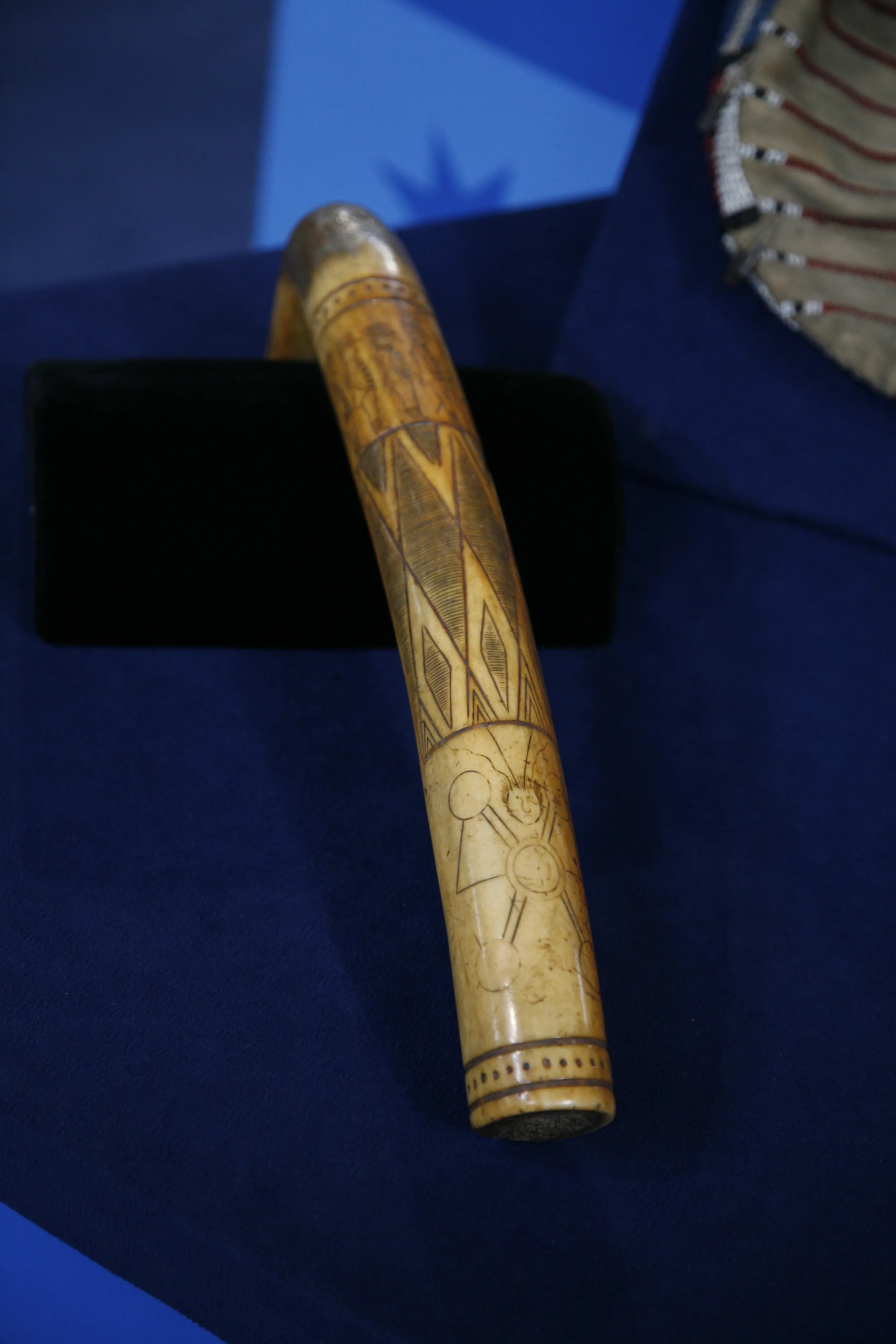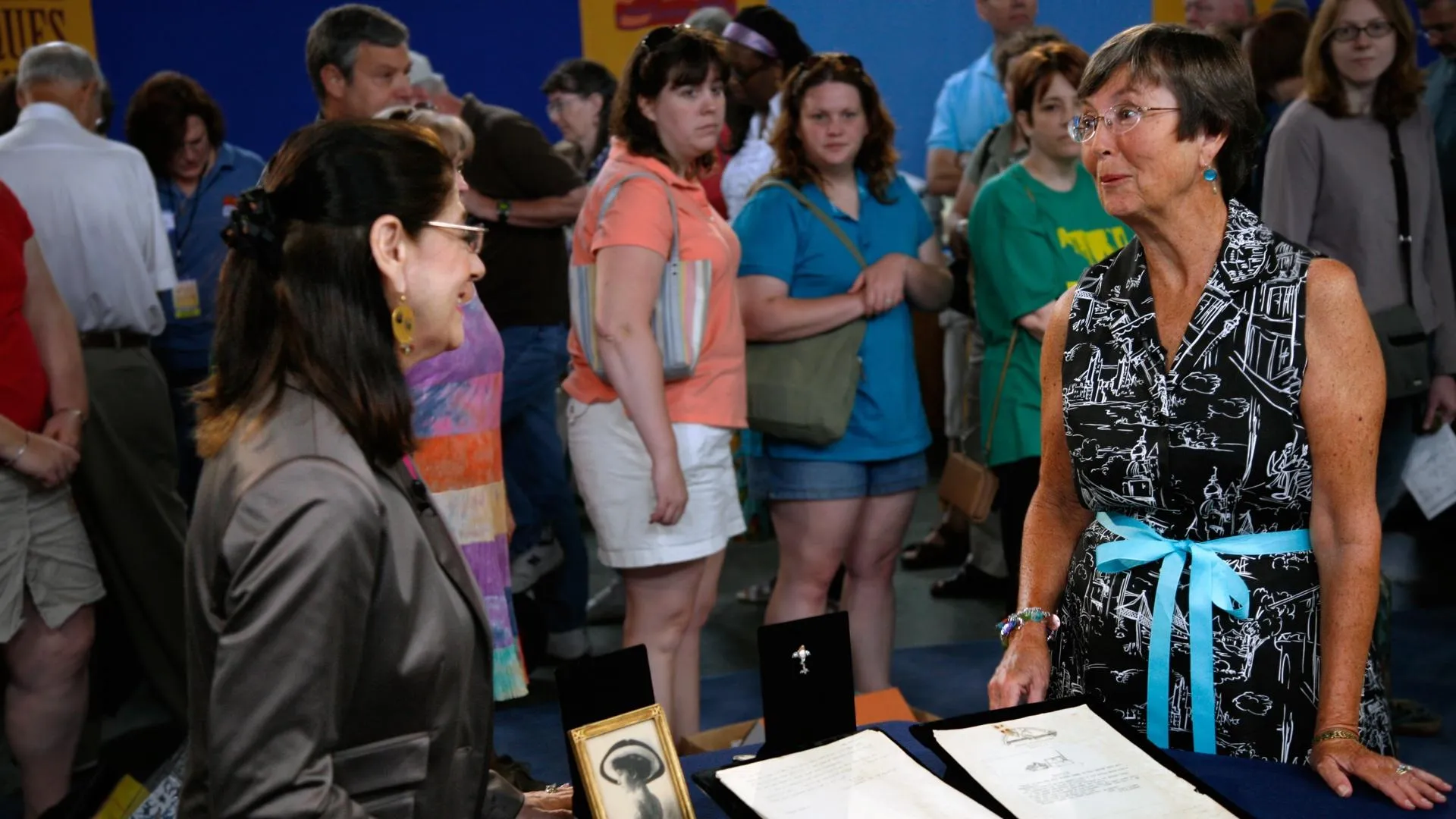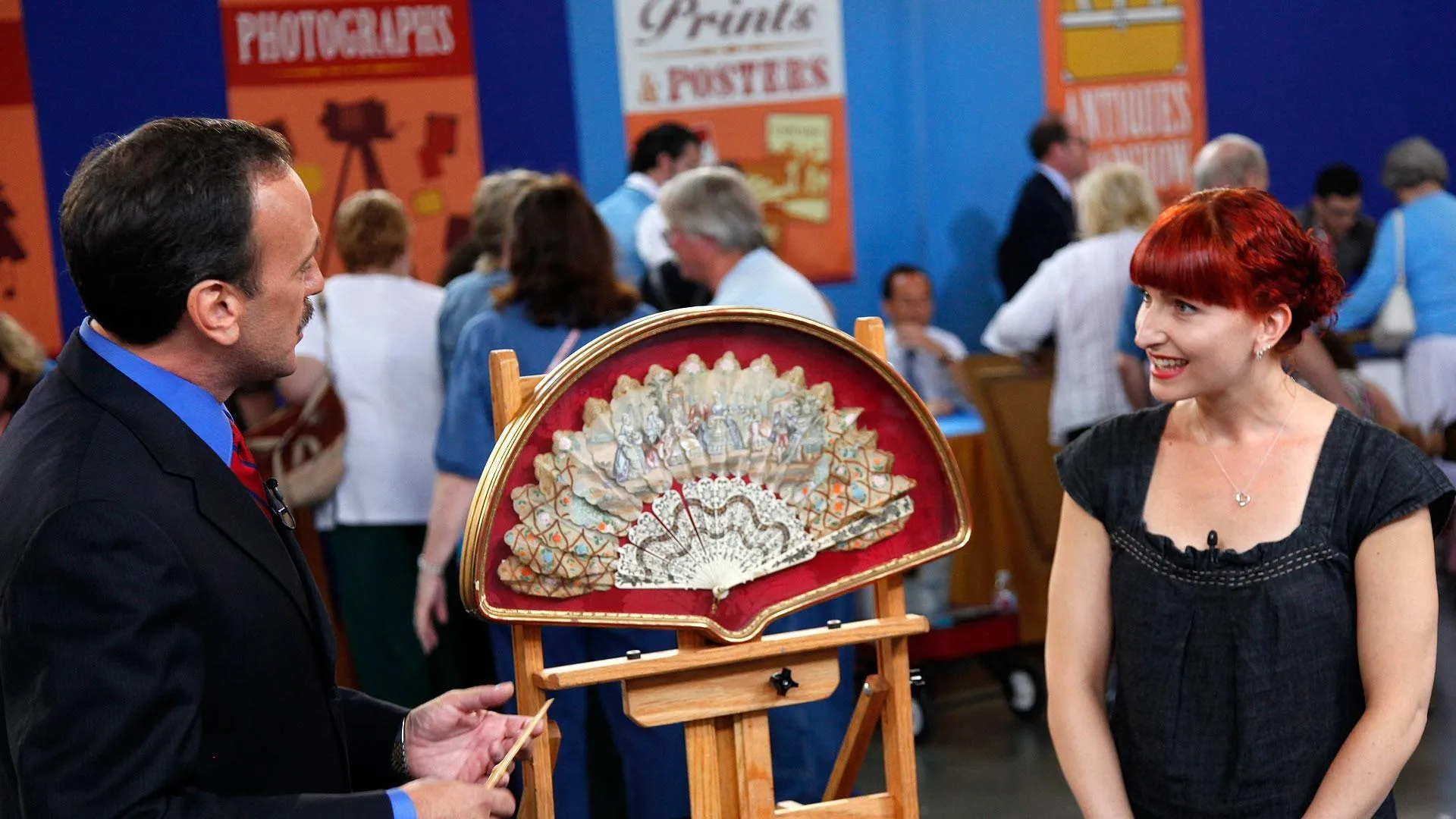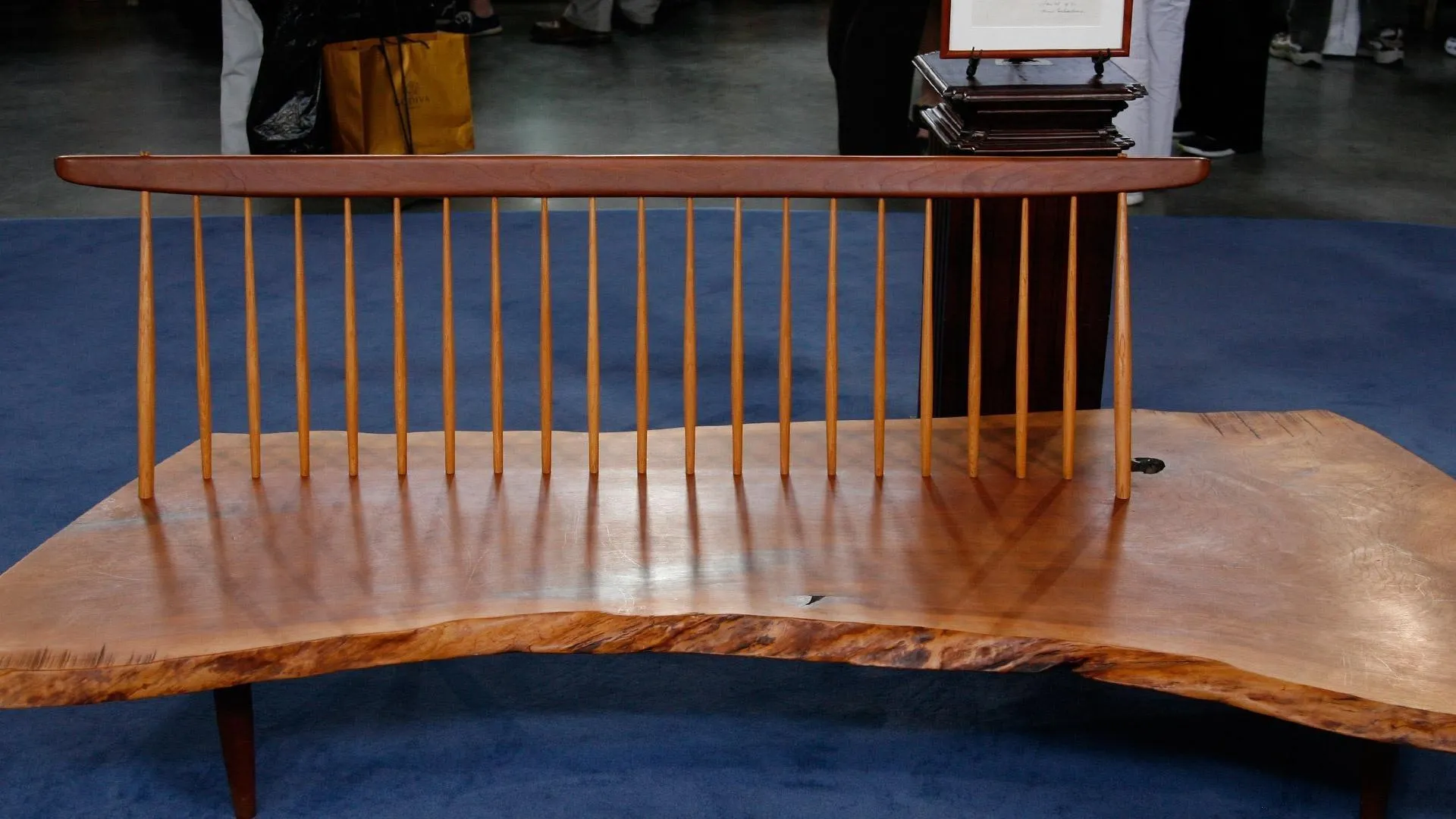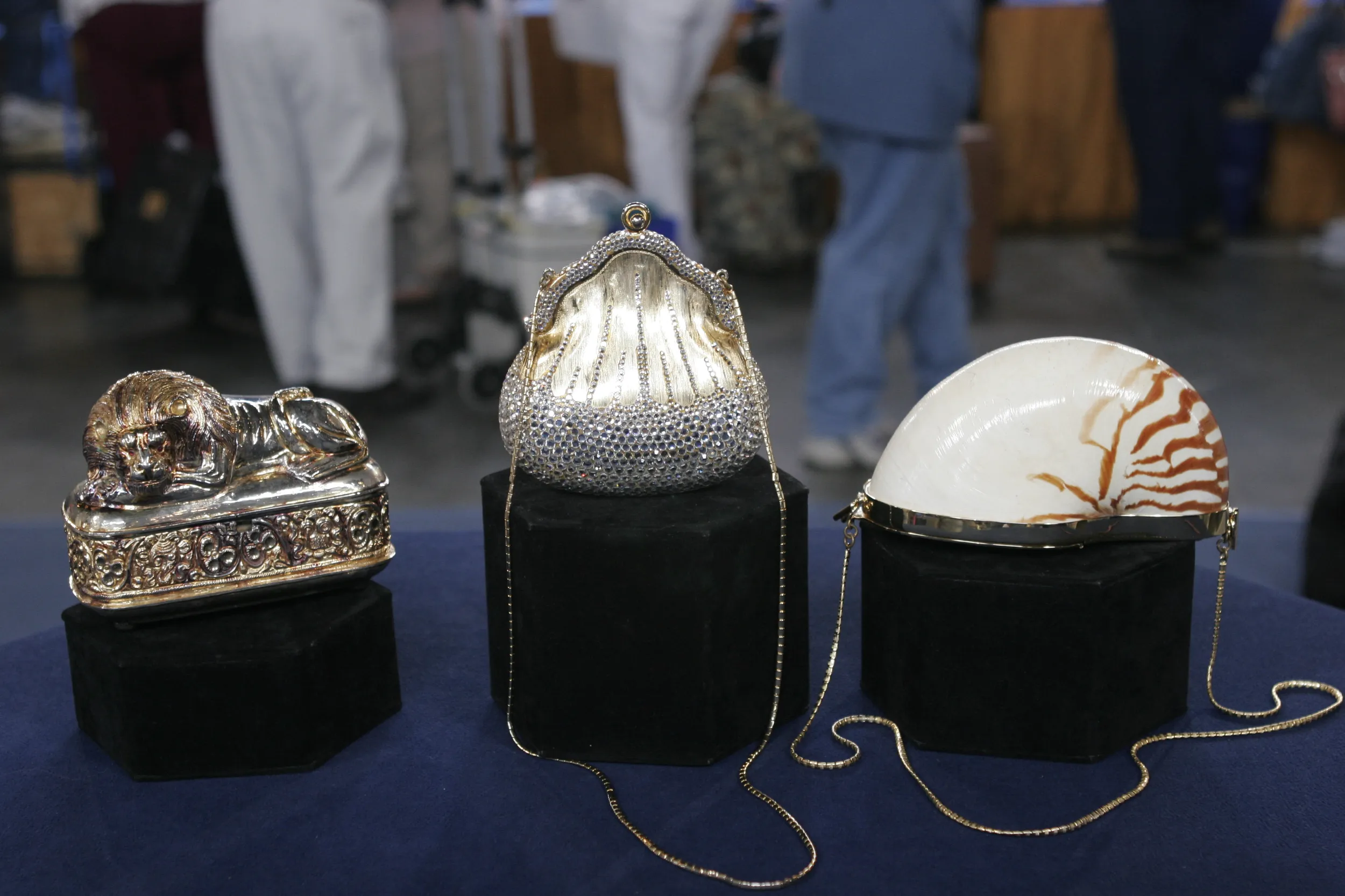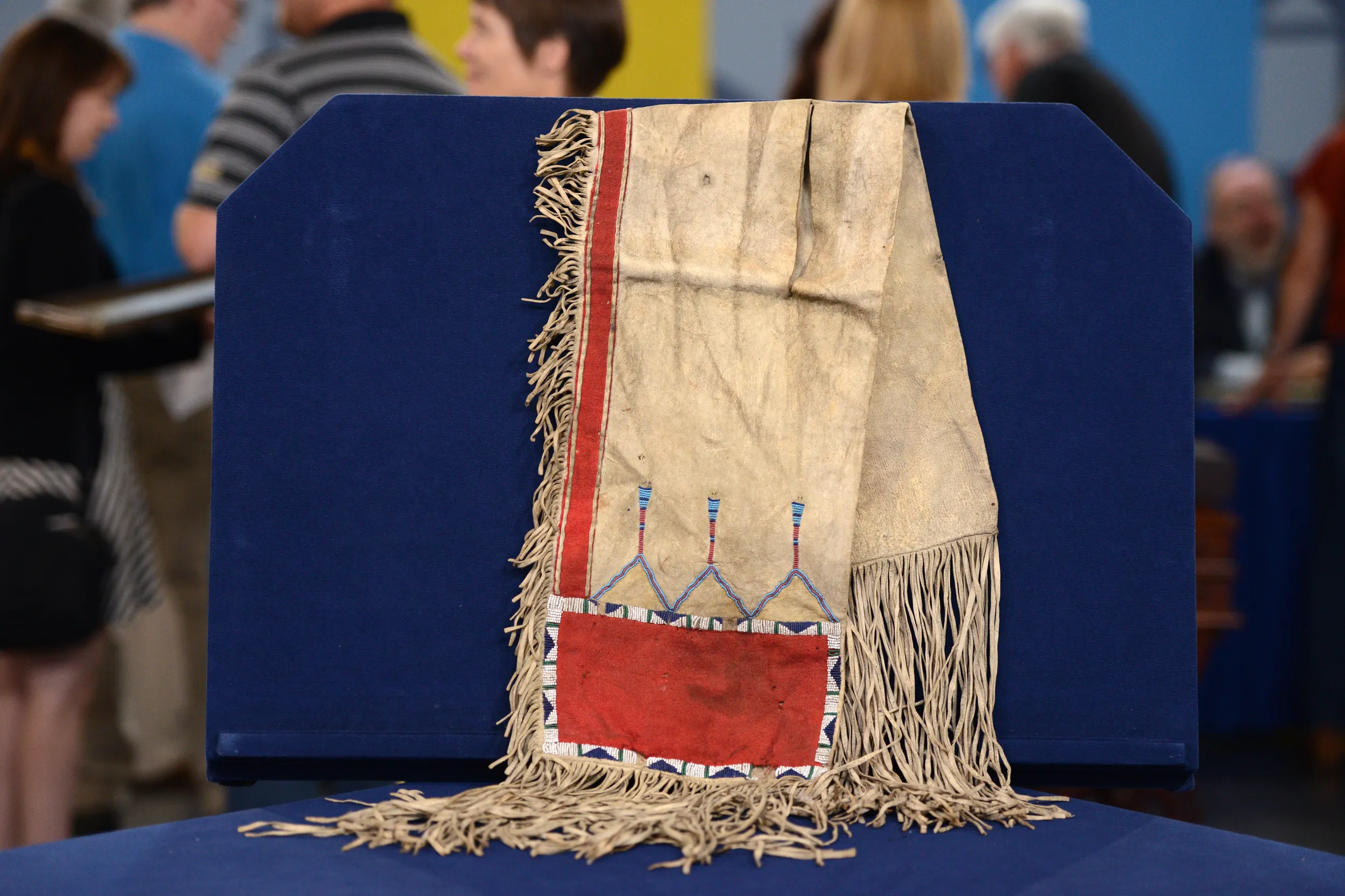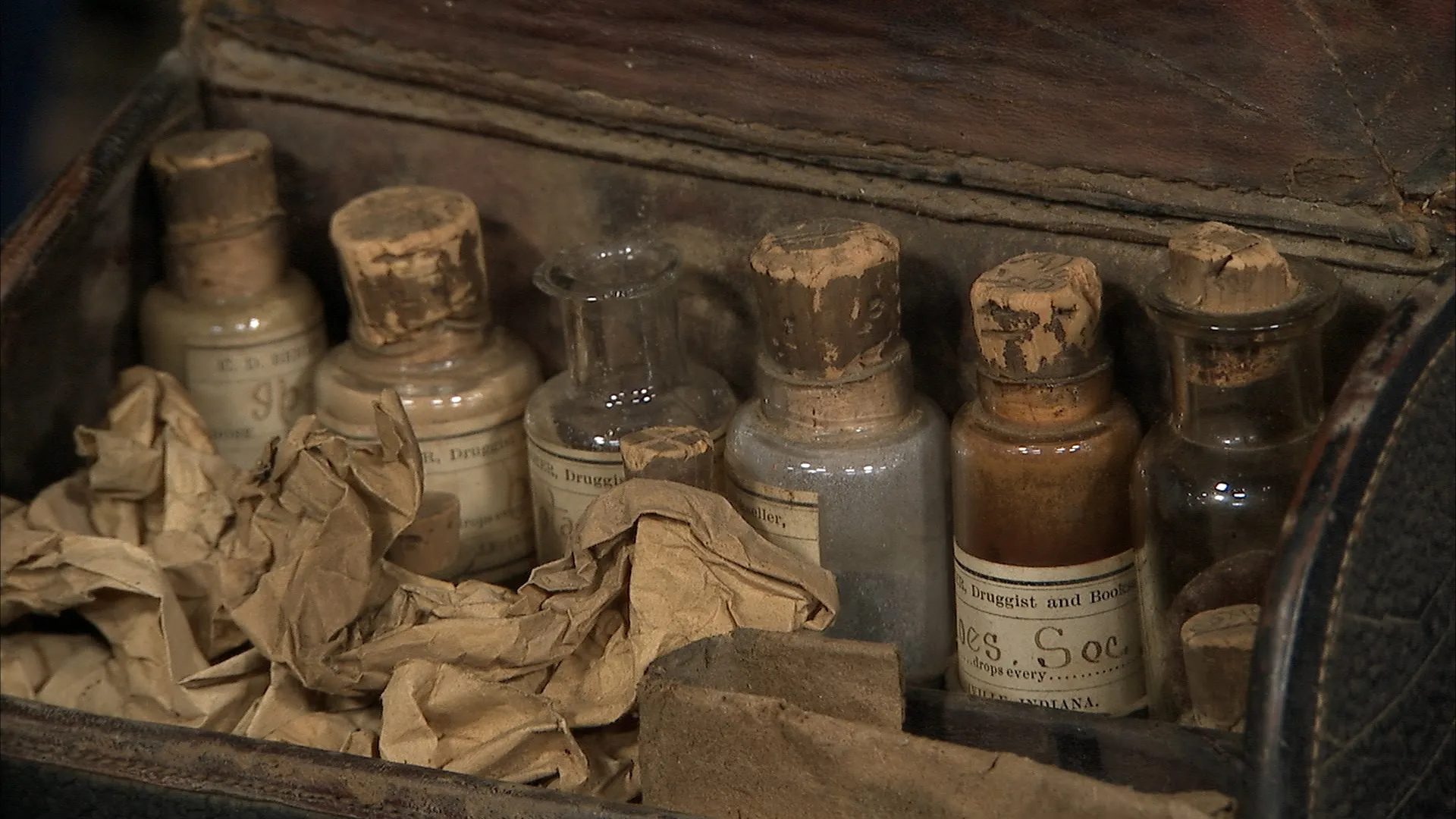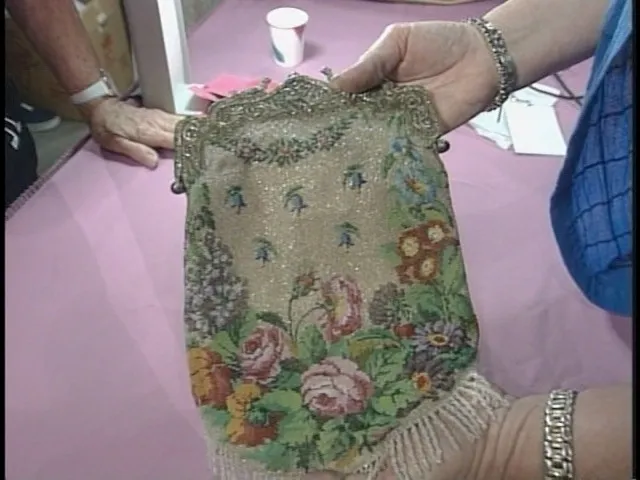GUEST: These came down to me from my great-grandfather, who acquired them out in, uh, Nebraska. He ran the government store among the Indians from 1871 to 1873. And while he was out there, of course, he interacted with the various tribes that came through, and this is just a small sampling of the items he brought back.
APPRAISER: I think I'll start with the trunk up on the top here. These are called parfleche trunks. Now, normally, they were in an envelope size. They would be much flatter, and they were used to store meat. A big trunk like this-- there was only a couple of groups that made these trunks, and they were more for clothing.
GUEST: Oh.
APPRAISER: They're made out of buffalo rawhide. The paint is probably a Chinese vermilion that was traded out onto the Plains, and a black, which was probably charcoal. This probably dates to about the 1830s or '40s.
GUEST: Uh-huh.
APPRAISER: The second piece, they call these possible bags. You can put anything possible in them.
GUEST: Good name. It was used to store clothing and things like that. And they weren't worn, they were just put on the inside of a teepee or an earth lodge.
GUEST: Mm-hmm.
APPRAISER: This one is really nice because you can pinpoint-date it. It has three different style beads. It has a really fine seed bead, and then it has a size we call a real bead, and then it has the larger-sized pony beads. These are called pony beads because they were brought out on pack horses, ponies.
GUEST: Okay.
APPRAISER: This is made out of buffalo hide, and because of all these three size beads, we can date this right to about the 1840s.
GUEST: Wow.
APPRAISER: Then we have an elk antler quirt. These are used as a horse whip and also as a weapon. They'd clout an enemy on horseback with this.
GUEST: Mm-hmm, it's, it's quite substantial.
APPRAISER: Yeah. And that has a nice trade cloth strap with some minimal beadwork and a beautiful buffalo-hide lash on it. And last but not least, we have a elk horn scraper the women would use to, to clean their hides. This is a particularly nice one. These dots probably represent hides. It's a tally, it's a...
GUEST: Oh!
APPRAISER: It's how many hides they, they skinned with it.
GUEST: Oh, for heaven's sake.
APPRAISER: This one has wonderful iconography, especially these military figures up here. The type of uniforms they're wearing date to the late 18th- early 19th century. It's kind of difficult to say exactly which tribe made these objects, but since he was in Nebraska, the Pawnee were in Nebraska, the Iowa were near there, and the Sac-Fox were near there. I have to tell you, in the ten years I've been doing "ANTIQUES ROADSHOW," these are the finest things I've ever seen.
GUEST: Really?
APPRAISER: Yeah, they're, they're absolutely beautiful.
GUEST: Oh, I'm so thrilled, I'm so thrilled.
APPRAISER: Starting with the parfleche trunk, I would put a auction value of about $20,000 to $30,000 on this.
GUEST: Oh, my goodness. (laughs)
APPRAISER: The possible bag, I'm going to put $30,000 to $50,000.
GUEST: Mmm.
APPRAISER: The elk horn quirt, which is one of the finest ones I've ever seen, I'm going to put $30,000 to $50,000 on that.
GUEST: (laughs) Oh, my goodness, oh!
APPRAISER: The scraper is a masterpiece. This is the finest elk horn scraper I've ever seen.
GUEST: Mmm.
APPRAISER: And conservatively, I'm going to put an estimate of $50,000 to $70,000 on it.
GUEST: Oh, my word, I'm just... I'm just blown away, I really am. That's wonderful.
APPRAISER: So, just these four pieces, I would conservatively say $130,000 to $200,000.
GUEST: Well, they're, they're real treasures, and...
APPRAISER: They are absolutely treasures.
GUEST: And I'm, I'm so pleased that we have retained them and they can be passed down through the generations.
APPRAISER: I'm glad you have, too.

